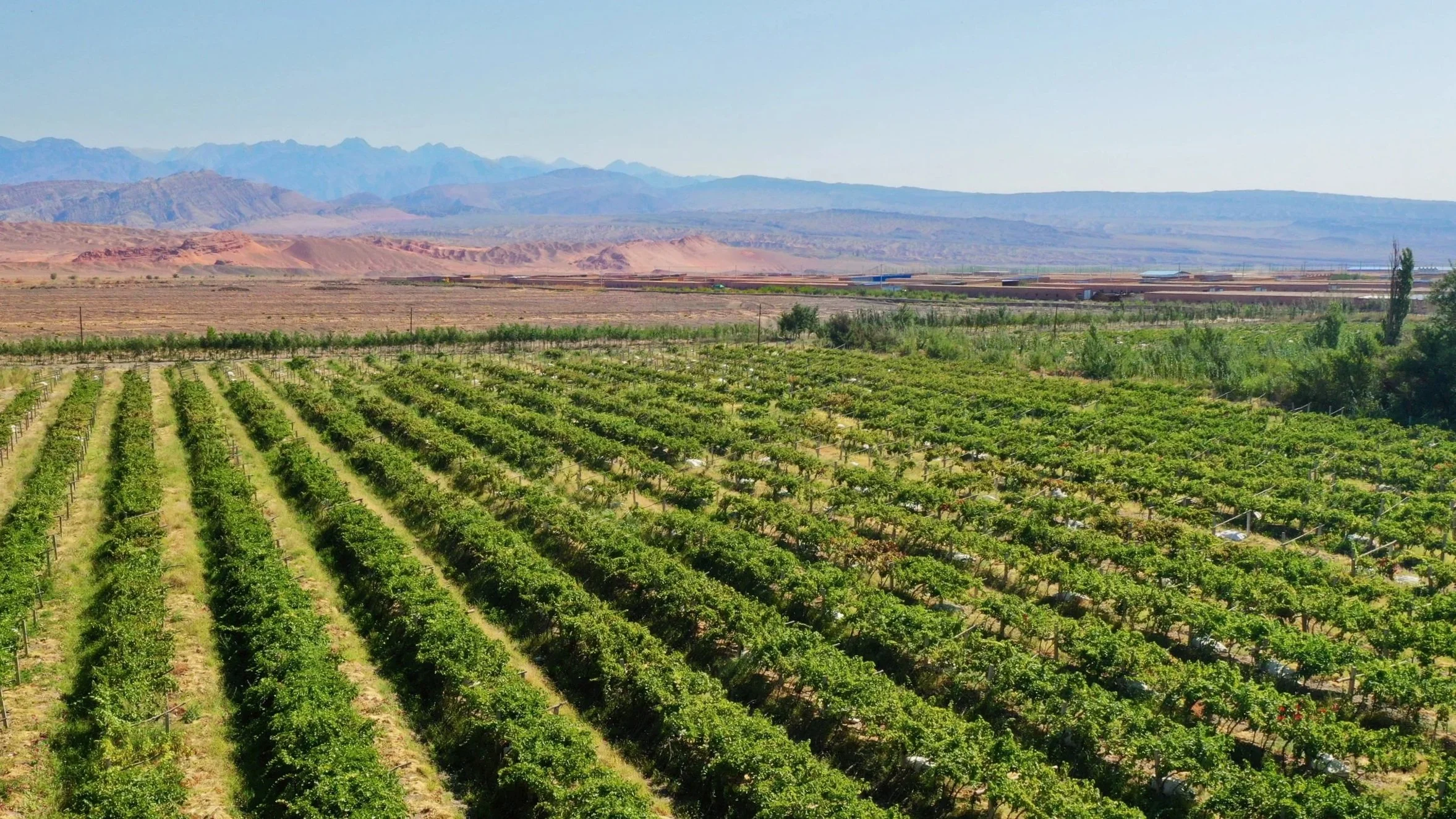
Xinjiang
新疆
As the largest province in China - rivalling the size of Queensland and Alaska - Xinjiang is a historic, diverse and unforgiving landscape. With it’s Central Asian identity and Silk Road legacy, it is home to Uyghurs, Kazakhs, Kyrgyz, Uzbeks and Hui minorities, gathered in fertile oases throughout the vast Taklamakan (塔克拉玛干) desert.
Despite being Muslim-majority, Xinjiang absorbed viticultural knowledge as a major hub along the Silk Road and developed ancient grape-growing tradition, with the Uyghur’s making Museles (مۇسەلەس), a boiled grape juice tonic for drinking and cooking use.
Modern industry development started in the 1970s, shifting wine production from local and artisanal production to large volume, state-run vineyards.
Famous for its lamb, wheat-based dishes, nuts, spices and high-quality fruit, Xinjiang is also China’s largest raisin producer and was noted by Marco Polo in the late 13th century for its quality fruit and wine.
Climate: Extremely Arid Continental Climate
Temperature: -6.3°C in winter, 33°C in summer
Altitude: 300m-1100m
Rainfall: 15mm p/a (very dry)
Sunlight: 3200 hrs p/a
Soil: Coarse, alluvial rock and carbonaceous, gypseous gravel at higher altitudes; sand, silt and takir at lower altitudes.
Key varieties: Cabernet Sauvignon, Merlot, Muscat
Notable Viticultural Practices: Vineyards must be irrigated
Geography
One of the furthest-inland wine regions in the world, with the closest ocean is the Arctic. Wine regions border the Tianshan Mountain Range (天山), which blocks cold air from the north and also provide the water necessary for agriculture. The ancient Karez (坎儿井) well systems, totalling more than 5,000km in length, transports water underground from the mountains to farms predominantly around Turpan.
Key subregions (west to east) include:
Ili Prefecture (Ili Kazakh Autonomous Prefecture)
ئىلى قازاق ئاپتونوم ئوبلاستى
*Also referred to as the Ili River Valley
Yanqi Hui County (Bayingolin Mongol Autonomous Prefecture)
يەنجى خۇيزۇ ئاپتونوم ناھىيىسى (بايىنغولىن موڭغۇل ئاپتونوم ئوبلاستى)
*Also referred to as the Yanqi Basin
Hoxud County (Bayingolin Mongol Autonomous Prefecture)
خوشۇت ناھىيىسى (بايىنغولىن موڭغۇل ئاپتونوم ئوبلاستى)
Wujaiqu County
ۋۇجياچۈ شەھىرى
*Also referred to as Northern Foot of Tianshan Mountains
Manas County (Changji Hui Autonomous Prefecture)
ماناس ناھىيىسى (سانجى ئوبلاستى)
Gaochan County (Turpan Prefecture)
قاراھوجا رايونى (تۇرپان شەھىرى)
*Also referred to as Tu-Ha Basin
Size
As of 2025, Xinjiang remains China’s leading grape-producing region, with a total vineyard area of 150,000 hectares - which includes grapes cultivated for table consumption and raisin-making.
Approximately 20,000 hectares are dedicated to winemaking, across 130 wineries.
Styles
Xinjiang’s wine styles reflect its extremely continental climate, resulting in ripe, concentrated and fruit-forward wines with high alcohol. Whites are typically rich, textural, and opulent, and reds typically have firm tannins with a sun-dried fruit character.
Beichun, a crossing of native grapes from Jilin province (vitis amurensis) and Muscat Hamburg, was developed by state-owned vineyards in the 1950s as part of the state’s efforts to create frost-resistant grapevines.
Xinjiang also has a reputation for quality sweet wines made using the appassimento method.
Puchang Vineyard Muscat 2017
100% Roudingxiang (Muscat PIWI). Hand picked in three passings for acidity, taste, and body. Fermented in French oak to approx. 70% MLF. Aged in 100% new Bordeaux barriques for 12 months before bottling.
Tiansai ‘Skyline of the Gobi’ Cabernet Sauvignon
100% Cabernet Sauvignon aged in 50% new French oak for 12 months.
Puchang Vineyard Beichun 2018
100% Beichun. Hand picked and fermented in 50% stainless steel and 50% second-use 3000 litre tonneau. Aged for 30 months in stainless steel and second-use wine barrels, then aged for 18 months in bottle before release.
Notable Wineries:
Imported:
Puchang Vineyard 蒲昌酒莊
Notable Producers:
Tiansai Vineyard
Silk Road Winery
Xianghai Vineyard
Suntime Winery
